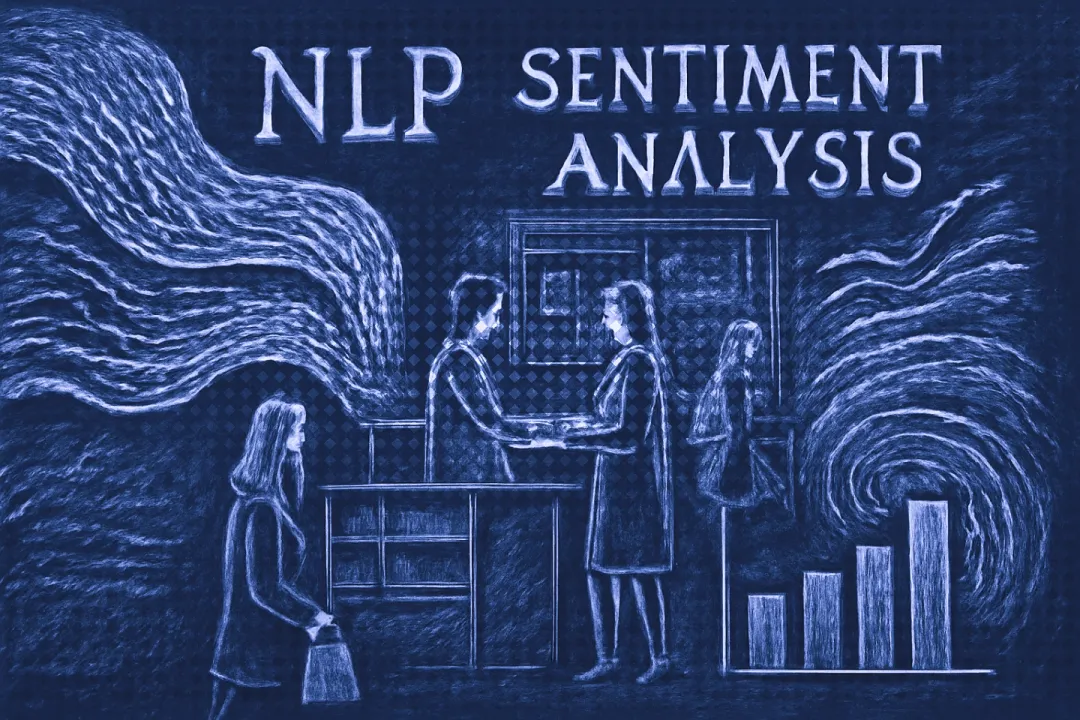
NLP & Sentiment Analysis for Mystery Shopper Feedback
Learn how Natural Language Processing (NLP) and sentiment analysis turn mystery shopper feedback into actionable insights for improving customer experience.
Deep Dive: NLP & Sentiment Analysis on Mystery Shopper Feedback
Your mystery shoppers provide a wealth of information, often in the form of detailed written narratives. These open-ended comments are goldmines, containing nuanced observations about your customer experience. But manually sifting through hundreds or thousands of these reports to find key themes and overall sentiment can be a huge task for your team. This is where Natural Language Processing (NLP) and Sentiment Analysis, branches of Artificial Intelligence (AI), come to the rescue.
Let’s take a closer look at how these AI technologies work and how they can help your business transform raw mystery shopper feedback into clear, actionable insights. If you’re new to how AI is used in audits, our introduction AI in Mystery Shopping: What It Is & How It Works provides a good overview.
The Challenge of Open-Ended Feedback
Mystery shoppers are trained to observe and report on many aspects of an interaction. Their written comments often capture:
- Specific examples of good or poor service.
- Details about the environment (cleanliness, ambiance).
- Quotes from employee interactions.
- Overall impressions and feelings about the experience.
While invaluable, this qualitative data is traditionally hard to analyze at scale. Your team might spend hours reading reports, manually categorizing comments, and trying to gauge overall sentiment – a process that’s both time-consuming and prone to subjectivity.
What is NLP in Mystery Shopping?
Natural Language Processing (NLP) is a field of AI that gives computers the ability to understand, interpret, and generate human language – both written and spoken. In the context of mystery shopping, NLP algorithms are ‘trained’ to read and make sense of the text in your shopper reports.
Sentiment Analysis is a common application of NLP. It automatically determines the emotional tone behind a piece of text. Is the shopper expressing positive, negative, or neutral feelings about a particular aspect of their experience? Sentiment analysis can go beyond simple positive/negative to identify specific emotions like joy, anger, or frustration, or even detect mixed sentiment within a single comment.
Think of NLP and sentiment analysis as super-powered assistants for your analysts, capable of reading and understanding feedback much faster and more consistently than humans alone.
How Sentiment Analysis Works on Shopper Comments
Let’s break down the process in simple terms:
-
Turning Narratives into Data (Preprocessing):
- The AI first cleans up the text: correcting typos, expanding abbreviations, and breaking down sentences into individual words or phrases (a process called tokenization).
- It might remove common words (like “the,” “a,” “is”) that don’t carry significant meaning, focusing on keywords and phrases.
-
Understanding Context and Sentiment Scoring:
- Unlike simply counting positive or negative words, advanced NLP models understand the context of words. For example, in the phrase “The store was clean but the staff was unhelpful,” the AI can parse the mixed sentiment – identifying “clean” as positive for the store environment and “unhelpful” as negative for staff.
- Each phrase or sentence is then assigned a sentiment score, often on a scale (e.g., from -1 for very negative to +1 for very positive, or a 1-100 scale), or categorized into discrete emotions.
-
Theme Extraction and Topic Modeling:
- Beyond sentiment, NLP can identify recurring themes and topics within your shopper feedback. For instance, if many reports mention “slow checkout lines” or “friendly greeters,” the AI will flag these as prominent themes. This is known as topic modeling, which helps you see the big picture of what’s driving customer satisfaction or dissatisfaction across many locations.
The Technology Behind It
The power behind this transformation lies in sophisticated NLP models, including advanced algorithms like transformer models and Large Language Models (LLMs). These technologies are capable of:
- Summarizing Feedback: LLMs can take lengthy shopper narratives and condense them into concise summaries, highlighting the most critical points and sentiments.
- Flagging Inconsistencies: AI can compare a shopper’s narrative description with their multiple-choice ratings, flagging inconsistencies that might indicate a misunderstanding or a need for further human review. This can cut report editing time significantly, with one case study showing a 25% reduction in editing time for mystery shop reports.
- Predictive Insights: Over time, by analyzing patterns in feedback, NLP models can even start to predict which operational areas are most likely to impact customer satisfaction, helping you proactively address potential issues.
Benefits in Practice
Integrating NLP and sentiment analysis into your mystery shopping program unlocks powerful advantages:
- Faster Analysis at Scale: What used to take weeks of manual coding can now be done in minutes. This speed allows you to react quickly to trends and issues. Imagine analyzing thousands of open-ended comments from hundreds of locations almost instantly.
- Uncovering Hidden Patterns: Human analysts might miss subtle, recurring issues across a large volume of reports. AI is designed to spot these patterns – like a specific product knowledge gap across an entire region or a consistent service flaw at a particular time of day – that can lead to targeted training or operational changes.
- Objectivity and Consistency: AI evaluates text based on programmed rules and learned patterns, reducing individual human bias in interpreting sentiment or categorizing feedback. This leads to more consistent and reliable insights across your entire audit program.
- Deeper, Actionable Insights: By freeing up your team from tedious manual tasks, they can focus on what they do best: interpreting the AI’s findings, developing strategic solutions, and putting insights into action.
Case Insight: IntelliShop Enhances Feedback Analysis with AI
A real-world example of NLP in action comes from IntelliShop, a leading mystery shopping provider. Faced with the challenge of manually coding vast amounts of open-ended feedback from their mystery shoppers, they partnered with NovaceneAI.
Novacene’s AI platform now rapidly summarizes and extracts key “nuggets” of insight from thousands of these open-ended responses. This means IntelliShop’s analysts no longer spend countless hours manually coding text. Instead, the AI platform quickly categorizes sentiments and identifies critical themes, even parsing mixed feedback like “clean restaurant but bad service.” This allows IntelliShop’s team to focus on deeper strategic analysis, turning raw feedback into actionable intelligence much faster.
This demonstrates that AI is already in use to handle large volumes of qualitative data, ensuring consistency and speeding up analysis, lending credibility to the discussion around AI’s practical benefits.
Tips for Getting Started
Ready to leverage NLP for your mystery shopping feedback? Here are a few tips:
- Ensure Data Quality: The better the input, the better the output. Encourage your mystery shoppers to provide detailed, specific, and clear narratives. Consistent question prompts for shoppers can also yield better NLP results.
- Choose the Right Tools: Many mystery shopping platforms now offer built-in NLP capabilities. If you’re managing data in-house, consider dedicated text analytics software or explore open-source NLP libraries if you have data science expertise. When choosing, consider features like real-time dashboards and ease of integration. Our guide Top 5 AI Tools for Mystery Shopping and CX Audits (and How to Choose) can help you evaluate options.
- Involve Human Analysts to Validate: While AI is powerful, human oversight remains vital, especially for critical insights. Have your experienced analysts review a sample of AI-categorized feedback and theme extractions to ensure accuracy and catch any nuances the AI might have missed. This hybrid approach ensures the best of both worlds. For more on this balance, see AI vs Human Mystery Shoppers: Finding the Right Balance.
Conclusion
The narratives from your mystery shoppers hold incredible value, and NLP with sentiment analysis is a game-changer for unlocking that value at speed and scale. By transforming qualitative data into quantifiable insights, AI empowers your team to move beyond manual processing and focus on strategic improvements. When combined with human expertise, these AI technologies greatly enhance your understanding of customer experience nuances, leading to better decisions and stronger business outcomes.
